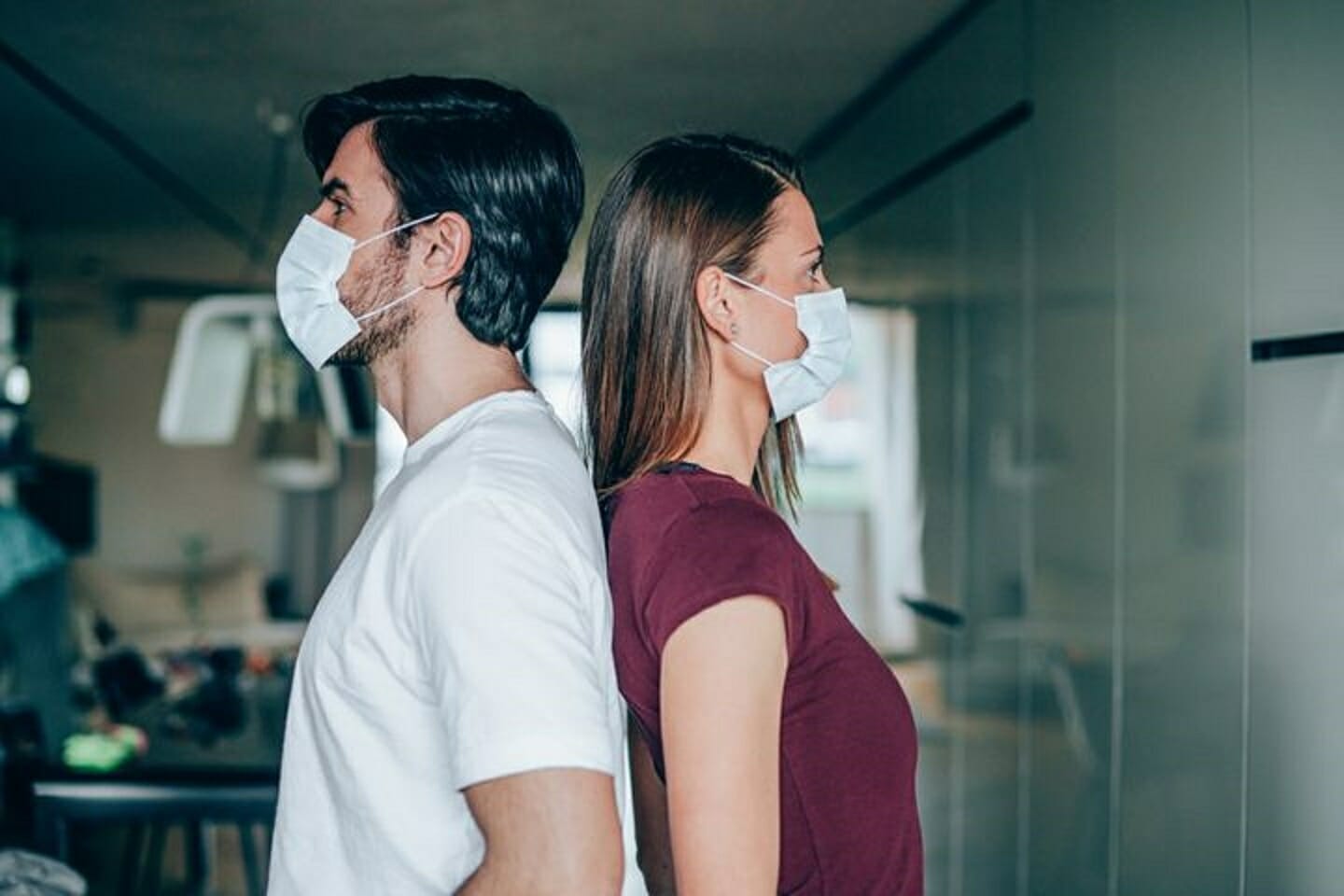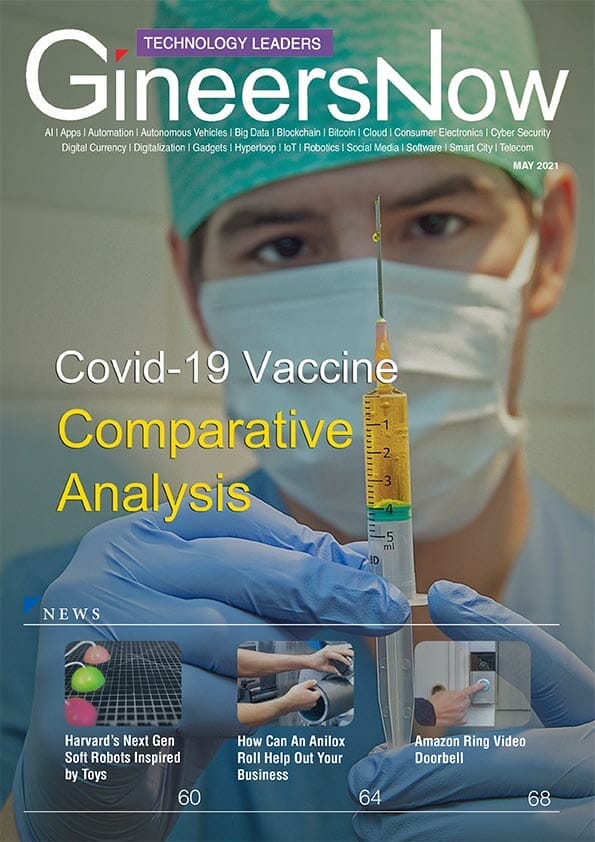Coronavirus Mutations
According to the research from bioRxiv, “we have developed an analysis pipeline to facilitate real-time mutation tracking in SARS-CoV-2, focusing initially on the Spike (S) protein because it mediates infection of human cells and is the target of most vaccine strategies and antibody-based therapeutics. To date we have identified fourteen coronavirus mutations in Spike that are accumulating.
Coronavirus mutations are considered in a broader phylogenetic context, geographically, and over time, to provide an early warning system to reveal coronavirus mutations that may confer selective advantages in transmission or resistance to interventions. Each one is evaluated for evidence of positive selection, and the implications of the mutation are explored through structural modeling.
The mutation Spike D614G is of urgent concern; it began spreading in Europe in early February, and when introduced to new regions it rapidly becomes the dominant form. Also, we present evidence of recombination between locally circulating strains, indicative of multiple strain infections. These finding have important implications for SARS-CoV-2 transmission, pathogenesis and immune interventions.”
The new coronavirus is mutating, but very slowly
The new coronavirus is an RNA virus: a collection of genetic material packed inside a protein shell.
Once an RNA virus makes contact with a host, it starts to make new copies of itself that can go on to infect other cells.
RNA viruses, like the flu and measles, are more prone to changes and coronavirus mutations compared with DNA viruses, such as herpes, smallpox, and human papillomavirus (HPV).
“In the world of RNA viruses, change is the norm. We expect RNA viruses to change frequently. That’s just their nature,” said Dr. Mark Schleiss, a pediatric infectious disease specialist and investigator with the Institute for Molecular Virology at the University of Minnesota.
SARS-CoV-2 is no exception, and over the past few months it has been mutating.
But the virus has mutated at a very slow pace. And when it does mutate, the new copies aren’t far off from the original virus.
“The sequences of the original isolates from China are very close to those in viruses circulating in the U.S. and the rest of the world,” said Dr. John Rose, a senior research scientist in the department of pathology at Yale Medicine who’s helping develop a COVID-19 vaccine.
More contagious?
Early research from scientists at Los Alamos National Laboratory shows that SARS-CoV-2 has mutated into a new form that may be more contagious.
The new strain is responsible for the vast majority of infections reported around the world since mid-March, according to the new study published in the preprint research website BioRxiv Thursday.

In total, the researchers identified 14 strains of COVID-19 and released their findings to help those working on vaccines and treatments.
That being said, the new dominant strain identified does seem to be more infectious in laboratory settings.
But scientists are now trying to understand how the variation behaves in the body — which may be very different from lab settings. Additionally, the study is in preprint, which means it hasn’t yet been fully peer-reviewed.
It’s also unclear whether the new mutation infects and sickens people differently. At this time, the illness and hospitalization rates caused by the new variation seems to be similar.
More data is needed to understand the implications of the new coronavirus mutations, like whether reinfections after recovery are possible, and whether the changes could affect the vaccines and treatments in development.
Mutations aren’t making it deadlier
The coronavirus mutations, like what’s going around in Italy and also New York, don’t seem to be any more infectious or fatal than the original strain that appeared in Wuhan, China, in late December.
Though there’s the very rare chance a virus could mutate to be more aggressive, if anything, RNA viruses are more likely to mutate into a weaker version.
“Nearly all coronavirus mutations will make some part of the virus work less well than before. The most common thing is for mutations to appear and die out again quickly,” said Dr. Benjamin Neuman, the head of the biology department at Texas A&M University-Texarkana.
But the characteristics and traits of that original strain and its coronavirus mutations aren’t vastly different from one another.
What this means for a vaccine
In fact, the slow and mild nature of the coronavirus mutations is good news for a vaccine.
“The virus is still so similar now to the initial sequence that there isn’t really much reason to think the differences will matter in terms of vaccine,” Neuman said.
Vaccines, in general, tend to target an early version of the virus.
Take the flu vaccine, for example.
“The H1N1 annual vaccine is still using a strain from 2009. It’s the ancestor of the various forms that have come after, and while there are differences now, a response against the ancestor seems to give good results against all the descendants,” Neuman said.
Usually, an older strain of a virus will “preserve enough features” that it will provide immunity against a whole group of variants, Neuman adds.
But the flu virus mutates fast and erratically from year to year.
On top of that, our immune system “has a terrible memory for flu viruses,” Neuman said, noting that the immune response to the flu only lasts around a year before we need to get revaccinated.
Schleiss says a better analogy for COVID-19 is the mumps. For more than 45 years, we’ve had a very effective vaccine for measles, mumps, and rubella (which are also RNA viruses).
“These viruses have not mutated [enough] to escape the protection provided by the vaccines,” Rose said. The same could very well apply to COVID-19.
“It should be possible to make an effective COVID-19 vaccine that will provide long-lasting immunity against this particular virus just as we have for many other viruses that do not change rapidly,” Rose added.
When we finally have a COVID-19 vaccine, it will most likely protect people against the “vast majority of circulating COVID-19 strains for the foreseeable coronavirus mutations,” Schleiss said.
Even if random coronavirus mutations do occur down the road, Schleiss believes the worst-case scenario is that we’ll see some breakthrough infections, but we wouldn’t have breakthrough life-threatening disease.
It’s still unclear exactly how long immunity will last once a person’s immune system beats the infection.
Once an infection leaves the body, it leaves markers in the immune system — or antibodies — that can quickly identify and fight the virus if it were to reappear in the future.

Looking back at the SARS pandemic in 2003, people who had SARSTrusted Source had a strong supply of SARS antibodies for about 2 years, providing them immunity against the virus.
After about 3 years, those SARS antibodies tapered off, and people had a higher chance of contracting the virus again.
The timeline with COVID-19 antibodies may be similar.
Within a few years, we’ll hopefully have enough herd immunity — from a vaccine along with natural immunity from so many people getting sick — to have eradicated the disease so reinfection will no longer be an issue.
Even if, years down the road, those COVID-19 antibodies wear off and SARS-CoV-2 makes a comeback, our bodies will still remember the infection and be ready to fight.
“Vaccines confer memory,” Schleiss said. Even if a person no longer has high levels of antibodies because their immunity has worn out, certain cells will mobilize and come into action if they detect the virus.
“The idea of waning immunity is complicated, and it’s more than just the issue of how soon do your antibodies dissipate and disappear after your vaccination,” Schleiss said.
Of course, there’s no way to predict exactly what’s going to happen and how long people’s immunity will last.
“Nature doesn’t work that way,” Schleiss said. “Time will tell.”
The new coronavirus SARS-CoV-2 has already mutated a handful of times, which has many people wondering whether the coronavirus mutations could lead to a more severe, deadlier disease.
According to experts, the new coronavirus mutations are extremely similar to the original virus that appeared in Wuhan, China, and don’t seem to be any more aggressive.
Because the coronavirus mutations are so similar, a vaccine would likely protect people against not only the original strain but new mutations as well.
Spike D614G: Coronavirus Mutations
The new strain, which has been dubbed ‘Spike D614G’ has been proliferating in Europe since at least mid-February, and spread to become the dominant form during the month of March. It is far more contagious than the original strain which emerged from Wuhan, for reasons as yet unknown.
Wherever it emerged it became dominant very quickly, and in some countries it became the only common strain within weeks. The paper notes that the rapid global spread of the coronavirus has provided it with “ample opportunity for natural selection to act upon rare but favorable coronavirus mutations.’’ Furthermore, if the virus does not wane away as the weather warms in summer there will be nothing to stop it mutating into more and more strains.
Coronavirus Mutations Early Warning
The mutation identified in the new report affects the now-infamous spikes on the exterior of the coronavirus, which allow it to enter human respiratory cells. The report’s authors said they felt an “urgent need for an early warning” so that vaccines and drugs under development around the world will be effective against the mutated strain.
In many places where the new strain appeared, it quickly infected far more people than the earlier strains that came out of Wuhan, China, and within weeks it was the only strain that was prevalent in some nations, according to the report. The new strain’s dominance over its predecessors suggests that it is more infectious, according to the report, though exactly why is not yet known.
Los Alamos Scientists
The Los Alamos team, assisted by scientists at Duke University and the University of Sheffield in England, identified 14 coronavirus mutations. Those coronavirus mutations occurred among the nearly 30,000 base pairs of RNA that make up the coronavirus’s genome. The report authors focused on a mutation called D614G, which is responsible for the change in the virus’ spikes.
“The story is worrying, as we see a mutated form of the virus very rapidly emerging, and over the month of March becoming the dominant pandemic form,” study leader Bette Korber, a computational biologist at Los Alamos, wrote on her Facebook page. “When viruses with this mutation enter a population, they rapidly begin to take over the local epidemic, thus they are more transmissible.”
Other COVID-19 Articles
COVID-19: SOCIAL IMPACT
GineersNow Distributes PPE to Medical Workers
Israeli Cured COVID-19 Patients Using Placenta
COVID-19: HARVARD BUSINESS SCHOOL
Harvard Covid-19 Strategy: How to Reopen a Country
Harvard Talks: Engineering Leaders Will Engage in Teaming
Harvard Talks: Forward-Thinking Engineering Leaders
Harvard Talks: Engineering Operation Impact of COVID-19
Harvard Talks: 7 Leadership Principles in the Time of COVID-19
Harvard Talks: Engineering Work Culture After COVID-19 Pandemic
Harvard Talks: 7 Leadership Principles in the Time of COVID-19
Harvard Talks: Cut Salaries or Cut People?
Harvard Talks: The Supply Chain in Post COVID-19 Era
COVID-19: WORLD HEALTH ORGANIZATION
WHO Preparedness and Response to COVID-19
WHO Q&A: COVID-19 and Influenza Comparison
COVID-19: CONSTRUCTION
Construction Force Majeure During COVID-19
Converting Existing Building to COVID-19 Hospital – WHO Guidelines
WHO COVID-19 Buildings & Tents Screening Layout Standards
Wellness Glass Walls by The Sliding Door Company to Help Combat COVID-19
COVID-19: HVAC
Ventilation Standards for Buildings Converted to COVID-19 Hospitals
Air Filtration for COVID-19 Treatment Centers
ASHRAE on COVID-19 HVAC Concerns
COVID-19: ENERGY
Oil Price Crashes Below $0 per Barrel
Coronavirus will accelerate the growth of renewable energy solutions
COVID-19: ECONOMIC IMPACT
COVID-19 Economic Impact Analysis
COVID-19 Economic Aftermath on the Construction Industry
Postponed Exhibitions in the Philippines due to COVID-19
Cancelled Major Events Around the World Due to COVID-19
World Bank Gives $12 Billion to COVID-19 Affected Countries
COVID-19: VENTILATORS, TESTING & PPE
UCLA Biodesign Fellow Focuses Biomedical Engineering Insights on Swabs Shortage
Here’s the Tesla Ventilator Prototype
Lamborghini Medical Shields & Surgical Masks for Health Workers
UCLA Engineer Made a Ventilator from Hardware Items
Forecast Deaths, Hospitals & Ventilators: COVID-19 Impact, USA Full Report
Top 10 Largest Ventilator Manufacturers in the World
Metronic Ventilator Ramping Up Production
Engineers, Can You Help Build a DIY Ventilator for Hospitals?
PPE Shortage Endangering Health Workers Worldwide
COVID-19: STATISTICS & FORECASTS
COVID-19 Deaths to Reach 81,000 in US By June – Forecasts by IHME & Univ. of Washington
List of Government Officials Tested Positive in PH
COVID-19 War: 70K Physicians vs 109M Filipinos
Famous People Who Have Tested Positive for COVID-19
These Politicians Tested Positive for Coronavirus (COVID-19)
COVID-19 Philippines: DOH on Code Red Status
COVID-19: SCIENCE
COVID-19 Treatment: The Search Continues
Complete List of Companies Working on Coronavirus Vaccine
Tiger Tests Positive for Coronavirus at New York Zoo
COVID:19: PREVENTION TIPS
How to Create a COVID-19 Proof Workplace
Work From Home Tips for Engineering, Industrial & Tech Companies
Water is Our First Line of Defense Against COVID-19
The List of COVID-19 Disinfectants Approved by EPA
COVID-19: TECHNOLOGY
How Artificial Intelligence Can Drive Greater Speed and Accuracy in Vaccine Development
Cyber-Criminals are Exploiting People’s Fears of COVID-19
COVID-19: MARKETING
Rewriting Marketing in Times of COVID-19 Crisis?
Hyundai Motor Extends Warranties Due to COVID-19
Top 5 Most Traded Stocks During COVID-19
COVID-19: AVIATION
Can We Give Airline Financial Relief to Protect Their Jobs?
COVID-19: APAC Air Passenger Demand Dropped 65.5%
Emirates Airline Passenger Rules During COVID-19
Airlines Around the World are Struggling to Survive
Show Your COVID-19 Test Result at the Airport
The Most Modern Flying Hospital with ICU from Germany
COVID-19 Impact: 25 Million Jobs at Risk with Airline Shutdown
Airbus Gives 3D-Printed Hospital Visors to Health Workers
Airlines COVID-19 Analysis: Aviation Collapsed
Air Cargo Demand Down 3.3% due to COVID-19 Disruption
COVID-19 Financial Impacts in the Aviation Industry
COVID-19 Hits January Airline Passenger Demand, IATA


















